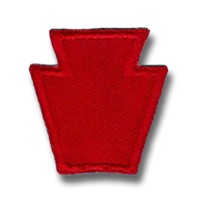If you do NOT see the Table of Contents frame to the left of this page, then
Click here to open 'USArmyGermany' frameset |
28th
Infantry Division
Keystone Division
(Page 3 - Infantry Regiments)
Looking for more information from military/civilian
personnel assigned to or associated with the U.S. Army
in Germany from 1945 to 1989. If you have any
stories or thoughts on the subject, please contact me . .
|
|
|
|
|
|
| 109th
Infantry Regiment |
|
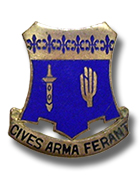 109th Infantry Regiment
crest
109th Infantry Regiment
crest |
|
|
|
|
|
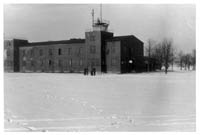
1. 109th Inf Regt NCO Academy |
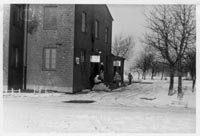
2. Entrance to NCO Academy |
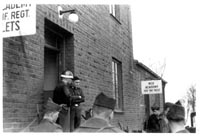
3. Cadre look over new students |
|
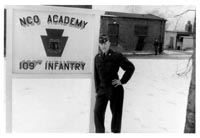
4. Academy sign |
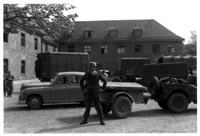
5. Ready to move out for an exercise |
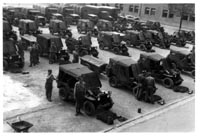
6. Hq/Hq Co motor pool |
|
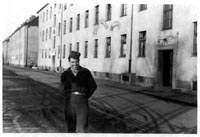
7. Sexton in front of barracks |
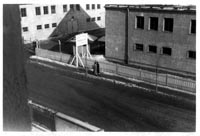
8. Gablingen Kaserne street |
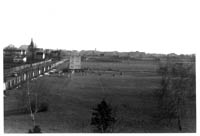
9. Football
field
|
|
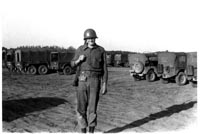
10. The
album owner at Hohenfels
|
|
|
|
|
|
|

Main gate, Infantry Kaserne (Amerika in Augsburg Assn.) |
|
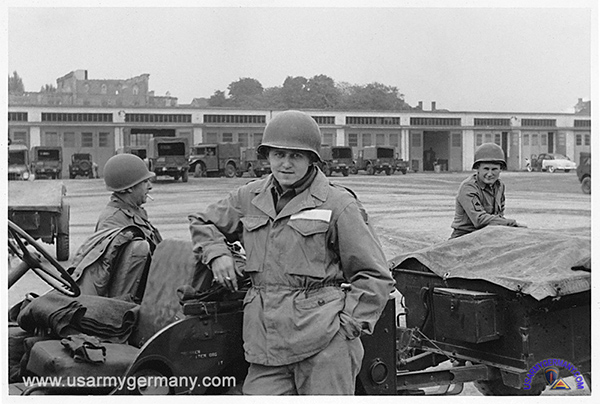
3rd Battalion motor pool, Infantry Kaserne (Amerika in Augsburg Assn.)
|
|
| 1951 |
| (Source: Email from David H. Lee via Max Lohrmann, Amerika in Augsburg Assn.) |
While searching the Internet, to try and locate my duty station in Augsburg, Germany, during the time period 1951-1952, I kept finding Flak Kaserne, Sheridan Kaserne and Reese Kaserne, but no mention of Infantry Kaserne.
I was stationed there in late 1951 with Heavy Weapons Company M, 3rd Battalion, 109th Infantry Regiment, of the 28th Infantry Division. Also, Company L, a rifle company, and Headquarters Company of the Third Battalion was also stationed (billeted?) in the building.
I returned home in 1952 and I believe the 28th Division was replaced by the 5th Division. I assume the 11th Airborne Division took over for the 5th Division in 1956.
Our barracks were Bldg #301. A soldier fell from a window under mine and was killed in the fall, I believe, early 1952.
The metal fencing near Bldg #308 I remember as a fence I spread to enter one night after bed check and then I straightened the fence to appear as not being spread, thus missing the guard at the gate.
Our Regimental Headquarters was located at Gablingen Kaserne, a short distance from Infantry Kaserne. This was where all trailers were kept, loaded with ammunition for our 81mm Mortars, Machine Guns and 75mm Recoilless Rifles, which were picked up and accompanied us on all alerts when called out. We sometimes were called out 2-3 times in a 24-hour period. |
|
|
| (Source: Max Lohrmann, Amerika in Augsburg Assn.) |
3rd Bn, 109th Regt
Augsburg |
|
|
|
|
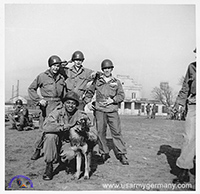
1. Training |
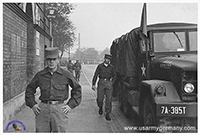
2. 385th Trans Co truck |
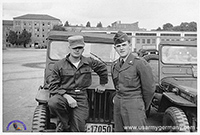
3. 3rd Bn soldiers |
|
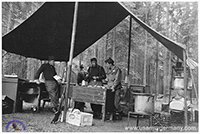
4. Mess tent |
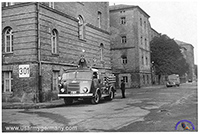
5. Fire truck |
|
|
|
 |
|
|
| 110th
Infantry Regiment |
|
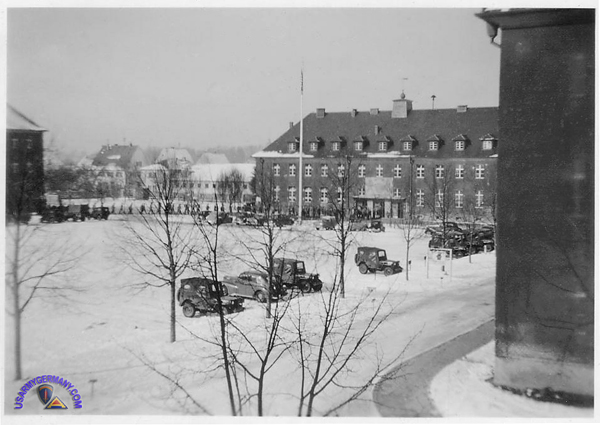 Ludendorff Kaserne (Wiley Bks), Neu Ulm - home of the 110th Inf Regt (Roy Davis, website)
Ludendorff Kaserne (Wiley Bks), Neu Ulm - home of the 110th Inf Regt (Roy Davis, website) |
|
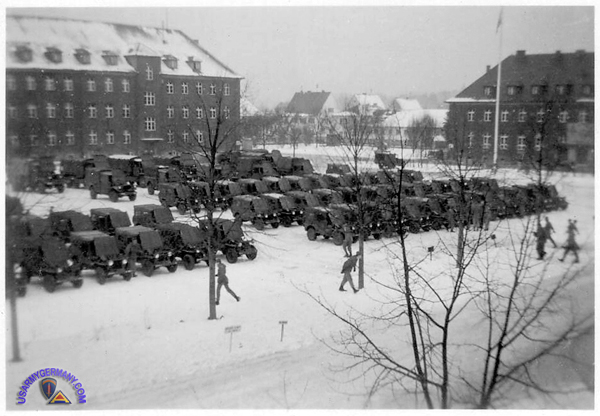 Ludendorff Kaserne, Neu Ulm (Roy Davis, 110th Inf Regt)
Ludendorff Kaserne, Neu Ulm (Roy Davis, 110th Inf Regt) |
|
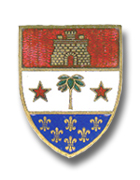 110th Infantry Regiment
crest 110th Infantry Regiment
crest |
| |
| (Source: Email
from Bill Mcdaid) |
I served in the 110th Inf. from March of 1951 until February 1954. I served in A company at Hindenburg Kaserne and was mostly on tdy at the 110th Inf. N.C.O. Academy as cadre at Ludendorff Kaserne.
Reading the history really brought back a lot of memories. Thank you
Bill Mcdaid |
|
|
|
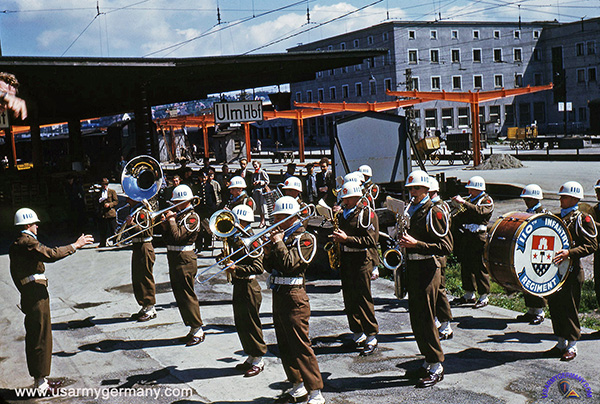
The 110th Infantry Regimental Band
plays at the Ulm train station during
the arrival or departure of a dignitary (Walter Elkins) |
| (Source: author's collection) |
110th Inf Regt
Ludendorff Ksn |
|
|
|
|
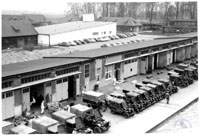
1. Ludendorff Ksn, Neu Ulm, 1953
|
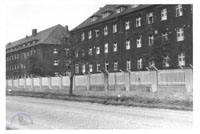
2. Barracks at Ludendorff
|
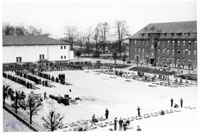
3. Field inspection |
|
|

4. 110th Inf Regt awards ceremony (KB) |
|
|
|
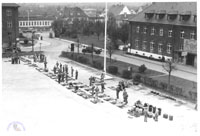
5. Field inspection (KB) |
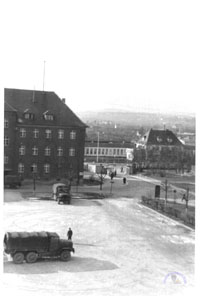
6. View towards main gate (KB) |
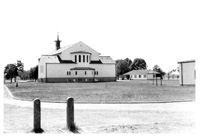
7. Post chapel, back view (KB) |
|
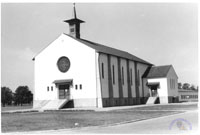
8. Post chapel, front view (KB) |
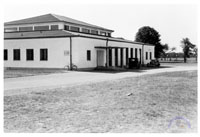
9. EM Club (KB) |
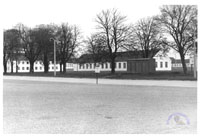
10. New artillery barracks (KB)
|
|
|
|
|
|
|
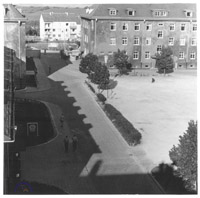
1. View towards main gate |
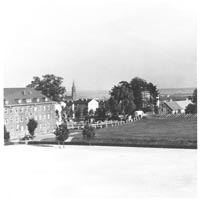
2. Ford Barracks, 1953 |
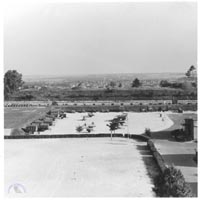
3. Part of the installation
|
|

4. PX and Snack Bar |
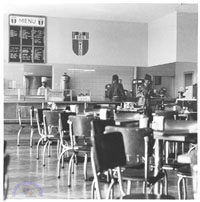
5. Inside the EES Snack Bar |
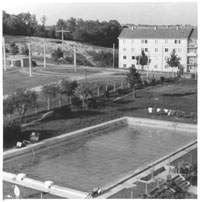
6. Ford Bks swimming pool
|
|
|
|
|
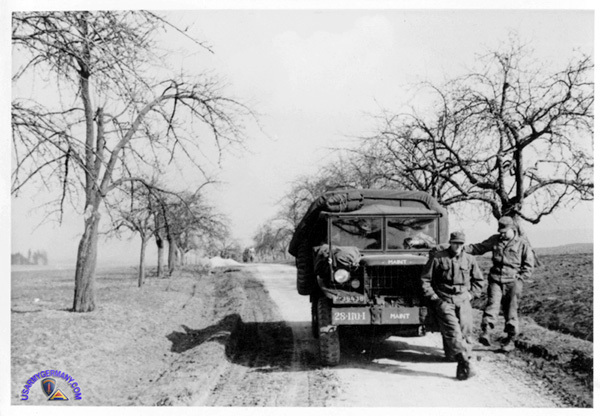
Truck of the maintenance section on a rural road in southern Germany |
| |
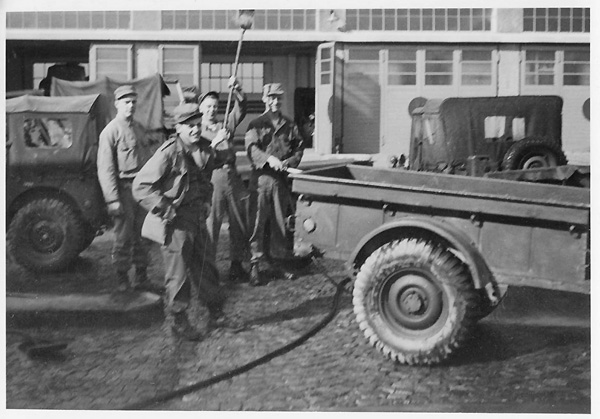
A detail cleans jeeps after a field exercise |
| |
|
|
|
|
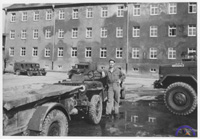
1. Around the motor pool |
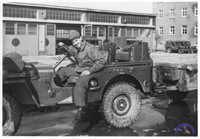
2. Around the motor pool |
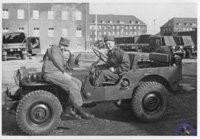
3. Around the motor pool
|
|
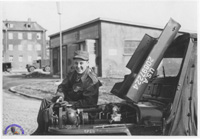
4. Around the motor pool |
|
|
|
|
| |
| 1953 |
| (Source: STARS & STRIPES, July 28, 1953) |
110th Inf Regt NCO Academy
The 110th Inf NCO Academy was established at Ulm in March 1952. Lt Col Dured E. Townsend was the first commandant. The first four-week class consisted of 82 students, 70 of which graduated successfully.
In July 1952, the academy initiated a six-week cycle with a class of approximately 80 NCOs or potential NCOs. Lt (sic) James B. Gustafson assumed the role of NCO academy commandant at that time. He was later succeeded by 1st Lt Francis E. Howard. Of the 636 students who have attended the academy since the first class, 414 have graduated.
Subjects that received the most emphasis at the academy included tactics, methods of instruction, mapreading and weapons. Cadremen of the academy also performed other duties in addition to instructing classes. Both during cycles and in between, they acted as umpires during company testing, conducted the regimental expert infantry badge tests, taught air transportability, and gave instructions to special units and Air Force personnel stationed in the Ulm area. |
|
|
| |
| 1954 |
| (Source: STARS & STRIPES, March 7, 1954) |
A first increment of six school-trained counter-fire technicians have joined the 110th Inf Regt at Ulm. They have been assigned to the Counter-fire Platoon of Hq/Hq Co, 110th Inf .
The platoon consists of 20 men and one officer and has the mission of locating hostile weapons, particularly mortars and artillery, with the aid of the sound locator set GR6.
CO of the 110th Inf Regt at this time is Col Sam J. Rasor. (He replaced Lt Col Ricard A. Dana as CO in October 1953.) |
|
 |
|
|
| 112th
Infantry Regiment |
| |
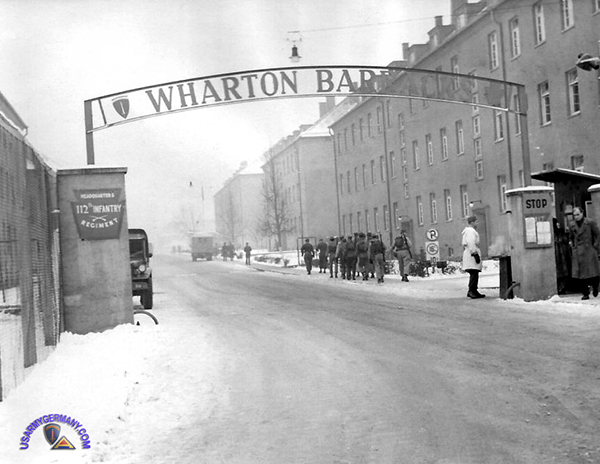 Wharton Barracks, Heilbronn - home of the 112th Inf Regt, ca. 1952 (Pinterest website)
Wharton Barracks, Heilbronn - home of the 112th Inf Regt, ca. 1952 (Pinterest website) |
| |
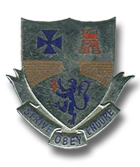 112th Infantry Regiment crest 112th Infantry Regiment crest |
| |
| (Source: Heilbronn
Eagle, October 12, 1987) |
Retired soldiers returns to reminisce
By Mike Novogradac
Upon swinging through Heilbronn and Wharton Barracks after 33 years, Army reserve Lt. Col. (Ret.) Robert E. Houle only remembers the things that were important to him as an infantry Private that long ago.
In November 1951, Houle's unit, the 112th Infantry Regiment, 28th Infantry Division, Pensylvania National Guard, was activated for the Korean War. His unit crossed the Atlantic and made its home at Wharton Barracks until January 1954, when they all packed their things and headed back to the Keystone state. |
|
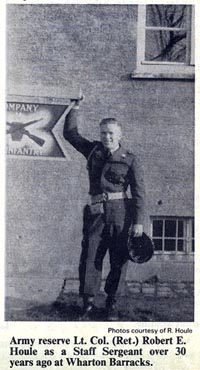 |
|
His
memories of living in Building 9 (where Headquarters Company,
26th Signal Battalion is now) are simple -- and one new
addition to the building caught his attention immediately.
"The tile floors is what caught my eye," Houle said. "We
used to have to polish the old wooden, slotted floors
with steel wool and wax. We kept it looking good always."
Houle also remembers the John F. Kennedy Housing Area
as it used to be. "The housing area was nothing but forest,"
he said. "And the big parking lot where the flag pole
is now was a gravel lot for unit formations."
Another thing important to him then was family. "At that
time, everyone lived on post. Very few soldiers brought
their families over, except for high ranking officers
and NCOs (noncommissioned officers). And of course, no
one in the National Guard brought families."
During his recent tour of Germany and France on a Deutsch
Bundesbahn Eurail pass, Houle made a mandatory stop at
the Heilbronn train station. I didn't even recognize Heilbronn,"
he said. "I remembered the Rathaus with it's clock and
I remembered marching down the main street in a parade.
"It's hard remembering after 33 years, because so much
has changed. It all stopped me cold. Even the roof of
Killians Church was still bombed out from World War II."
Houle does remember two other areas of Germany, though,
but he plans on visiting only one. "Hohenfels Training
Area -- I'm not going there," he said. "It's too military,
and I won't even recognize it, it's been so long.
"But I do want to visit Berchtesgaden, because I skied
for the 28th Division there." |
|
|
All his time in Heilbronn was spent training "because the Korean War was hot and heavy." Houle was lucky never to see combat, and when he returned Stateside as a Staff Sergeant, he attended college, went on to become an officer through the Officer Candidate School, and spent 24.5 years in the National Guard. With three years enlisted time and four years in the Army reserve, he retired with 31.5 military years under his belt.
Houle is now the director of the Mount Anthony Area Vocational Technical School in Bennington, Vt.
Oh - there's one more important thing Houle remembers. When he was a young soldier in Germany, his dollar bought him DM 4.20. |
|
 |
|
|
Related Links:
Letters From Deutschland - Letters written by John M. Holman while serving with Service Company, 109th Infantry Regiment, 28th Infantry Division, at Gablingen Kaserne, Augsburg, Germany 1951 - 1953. During these years, he has sent pieces to The Hampton Union (New Hampshire) about millitary life in Germany in the Army of Occupation. Some of these letters are now posted on a special web page of the Lane Memorial Library at Hampton, NH. |
|
| |
| |
| |
 109th Infantry Regiment
crest
109th Infantry Regiment
crest
 110th Infantry Regiment
crest
110th Infantry Regiment
crest

 112th Infantry Regiment crest
112th Infantry Regiment crest 